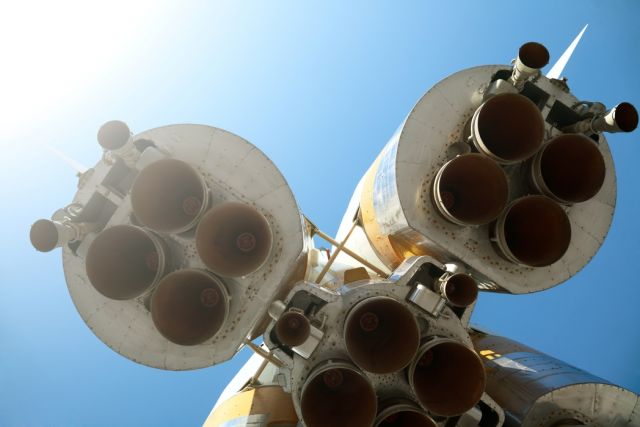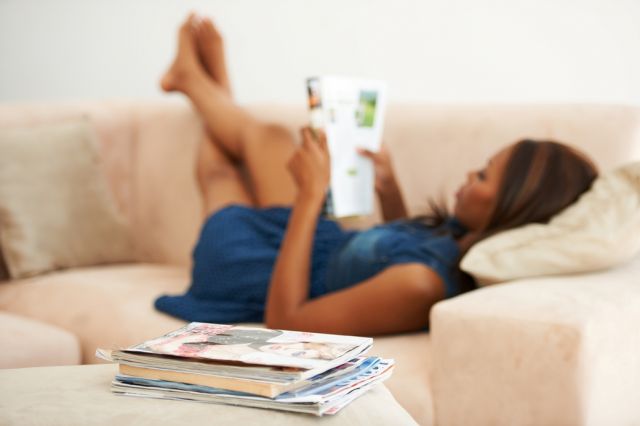Can a light bulb help you sleep better?
At the outset it might seem counterintuitive to think that lighting has much to do with sleep. After all, most of us don’t sleep with the lights on. A growing body of research, however, tells us that the light we’re exposed to just before we fall asleep can have a demonstrable effect on the duration and quality of our sleep.
It’s all about the white light
 “White” light isn’t really white at all. White light is composed of all of the colors in the visual spectrum, which is how a rainbow works. Artificial light sources can’t fully replicate the spectrum of light created by the sun – they emit a large portion of the visual spectrum but not all of it.
“White” light isn’t really white at all. White light is composed of all of the colors in the visual spectrum, which is how a rainbow works. Artificial light sources can’t fully replicate the spectrum of light created by the sun – they emit a large portion of the visual spectrum but not all of it.
The language of light is complicated, but essentially some light sources emit more of the red spectrum of light and others more blue spectrum light. Research has shown that exposure to the red end of the spectrum aids in the induction of sleep by rousing the body to release melatonin. This chemical triggers a sleep reaction in the brain. The blue end of the spectrum has the opposite effect.
If we stop and think about it this, it makes sense. Sunset, the last light we would naturally see before sleep is deep orange and red. At least to my way of thinking it makes perfect sense that we evolved so that the warm, waning light of sunset helps induce sleep. At the same time, midday sunlight is the “coolest” form of white light created naturally. So it makes sense that we’ve become conditioned to be at our most alert when the light around us it at its coolest white.
What we learned from astronauts
It would be terrific if we could live our days timed to the natural ebb and flow of light. Modern life, however, means a need for artificial light. Trouble is, it can mess with our natural circadian rhythms. We’ve all complained about the bright harsh fluorescent light of the office or how dark our home is when the sun sets. But when it comes to gratingly difficult artificial lighting conditions there’s one location more grueling than any other I can imagine. Space. The Final Frontier.

Astronauts on the International space station orbit the earth 16 times in a day, wreaking unbelievable havoc on their circadian rhythms. Between that and the high-demand job they’re being asked to do day in and day out, sleep deprivation among crew members is common.
NASA went to work to study what conditions could be improved to get the astronauts on a reliable rest cycle. Power requirements on the station are especially stringent, so energy efficient light sources were a requirement. Existing fluorescent sources emitted too much of the blue light spectrum which contributed to poor sleep inducing conditions. They also aren’t dimmable, the harsh transition from working light levels to total darkness made for an unnatural transition to sleep state.
Ultimately, NASA turned to LED technology to create warmer light, which does a better job of inducing sleep. The spectrum, low power consumption and dimmability of the fixtures makes for better sleep environment aboard the station.
Can you change your lighting to help you sleep?
You don’t need a big home renovation to help you sleep. Here are some things to try in your own home.
Stop using electronics before bed
This isn’t really about your home lighting as much as the light you expose yourself to before trying to sleep. The pale blue light of smart phones, tablets, and flat panel TVs is within the spectrum that keeps you awake. There are lots of reasons to put the iPad away before going to sleep. (Ahem, your spouse will thank you) But if you’re having trouble sleeping, try turning off the TV too.
Reduce light levels before going to sleep
Whatever lighting you’ve installed, be sure it’s dimmable. Reducing light intensity before bed reinforces circadian rhythms. Bonus points for dimming your lights slowly with an electronic control system. You should try to start reducing light levels three hours prior to your desired sleep time.
Switch to warm light sources before bed
 Science bears out that warmer (in terms of color) light sources are best for inducing sleep. In the days of the incandescent light bulb, this used to be easier to accomplish. Dimming an incandescent bulb makes it grow warmer in color temperature. That warm glow is closer to what we want to accomplish for sleep. The problem is incandescent light is terribly inefficient in terms of power consumption. The other problem is once it’s dimmed enough to be warm, it’s not bright enough for reading or conversation.
Science bears out that warmer (in terms of color) light sources are best for inducing sleep. In the days of the incandescent light bulb, this used to be easier to accomplish. Dimming an incandescent bulb makes it grow warmer in color temperature. That warm glow is closer to what we want to accomplish for sleep. The problem is incandescent light is terribly inefficient in terms of power consumption. The other problem is once it’s dimmed enough to be warm, it’s not bright enough for reading or conversation.
This is where LED lamps come in. LED is digital technology, as such manufacturers are working to make it more adaptable not only as a general light source but for specific purposes. From sleep/wake bulbs from Lighting Science Group to Warm Glow LED down lights from USAI, the industry is able to now develop light sources that help us sleep better. There are inherent benefits to LED – they last much longer than incandescent lamps, they save energy and they generate almost no radiant heat.
The light we live with shapes our experience of the world and sleep is no different. So in addition to the tips above, I recommend you become more conscious of the lighting you live with on a day to day basis and take steps to improve it wherever you can. The happier you are with your lighting, the more comfortable you will be, and that comfort can help but get you better sleep.


